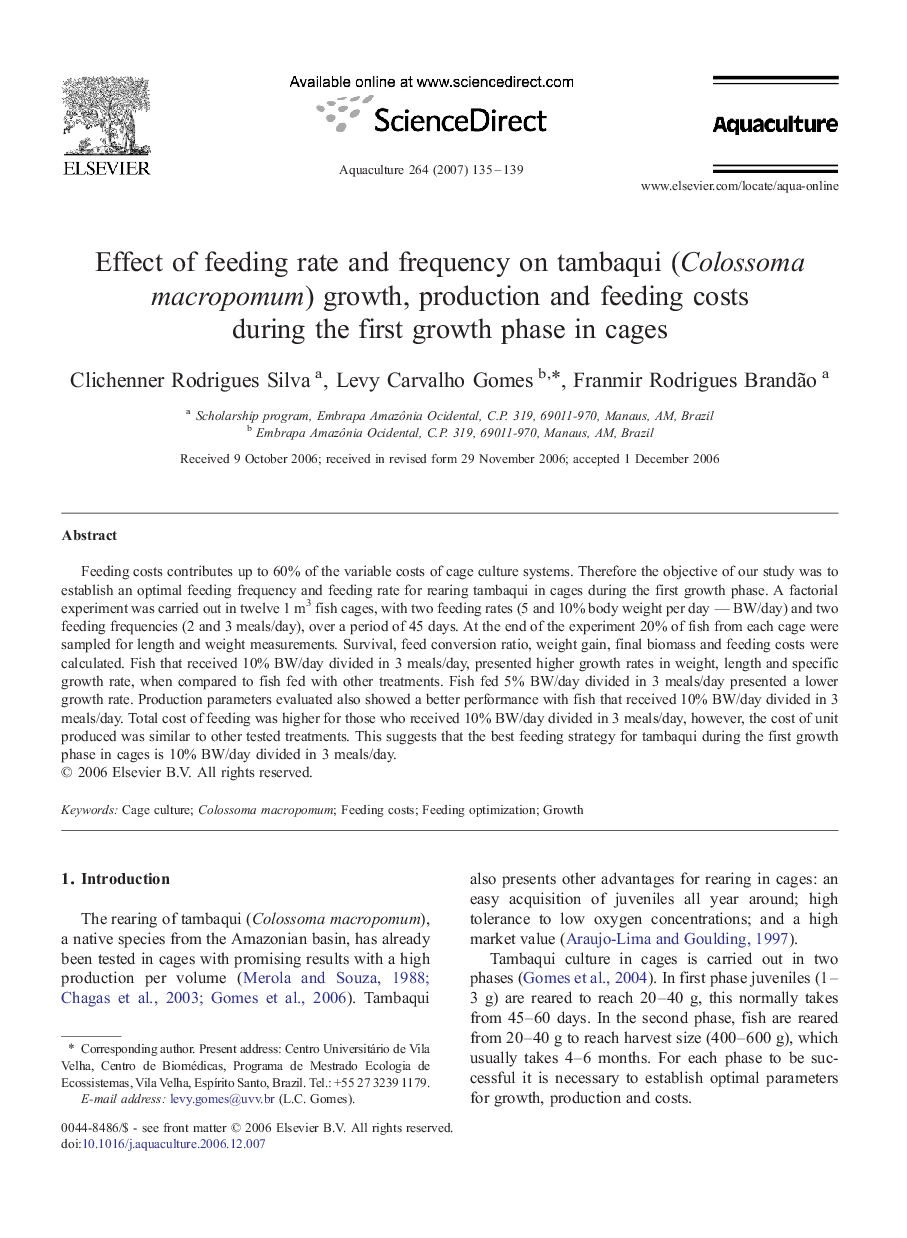| Article ID | Journal | Published Year | Pages | File Type |
|---|---|---|---|---|
| 2425371 | Aquaculture | 2007 | 5 Pages |
Feeding costs contributes up to 60% of the variable costs of cage culture systems. Therefore the objective of our study was to establish an optimal feeding frequency and feeding rate for rearing tambaqui in cages during the first growth phase. A factorial experiment was carried out in twelve 1 m3 fish cages, with two feeding rates (5 and 10% body weight per day — BW/day) and two feeding frequencies (2 and 3 meals/day), over a period of 45 days. At the end of the experiment 20% of fish from each cage were sampled for length and weight measurements. Survival, feed conversion ratio, weight gain, final biomass and feeding costs were calculated. Fish that received 10% BW/day divided in 3 meals/day, presented higher growth rates in weight, length and specific growth rate, when compared to fish fed with other treatments. Fish fed 5% BW/day divided in 3 meals/day presented a lower growth rate. Production parameters evaluated also showed a better performance with fish that received 10% BW/day divided in 3 meals/day. Total cost of feeding was higher for those who received 10% BW/day divided in 3 meals/day, however, the cost of unit produced was similar to other tested treatments. This suggests that the best feeding strategy for tambaqui during the first growth phase in cages is 10% BW/day divided in 3 meals/day.
